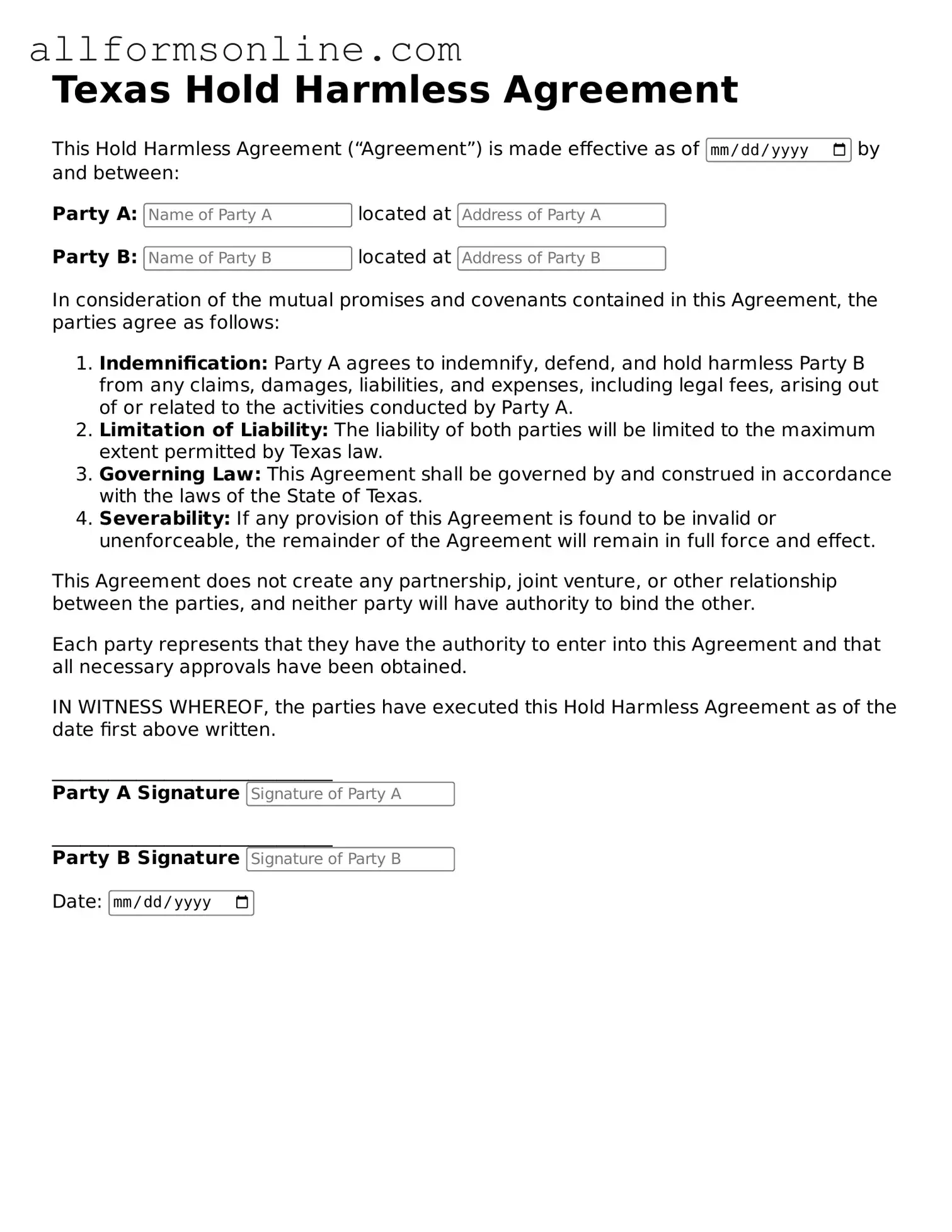What is a Texas Hold Harmless Agreement?
A Texas Hold Harmless Agreement is a legal document that protects one party from liability or claims that may arise from the actions or negligence of another party. This agreement is commonly used in various contexts, including real estate transactions, construction projects, and event planning, where one party assumes the risk associated with certain activities or circumstances.
Who typically uses a Hold Harmless Agreement in Texas?
This agreement is often utilized by contractors, property owners, event organizers, and businesses. For instance, a contractor may require a property owner to sign a Hold Harmless Agreement to protect against claims resulting from work performed on the property. Similarly, event organizers may ask participants to sign this document to limit liability during events.
What are the key components of a Hold Harmless Agreement?
A typical Hold Harmless Agreement includes several essential components: the identities of the parties involved, a clear statement of the activities or circumstances covered, the extent of liability being waived, and any specific terms or conditions that apply. It is crucial for the language to be clear and unambiguous to ensure all parties understand their rights and obligations.
Is a Hold Harmless Agreement enforceable in Texas?
Yes, a Hold Harmless Agreement can be enforceable in Texas, provided it meets certain legal requirements. The agreement must be clear, specific, and voluntarily agreed upon by all parties involved. Courts generally uphold these agreements unless they are found to be unconscionable or against public policy.
Can a Hold Harmless Agreement protect against gross negligence?
In Texas, a Hold Harmless Agreement may not protect against gross negligence or willful misconduct. Courts often view such actions as too severe to be waived through an agreement. Therefore, it is important to carefully consider the language used in the agreement and consult legal counsel if necessary.
How does a Hold Harmless Agreement differ from insurance?
A Hold Harmless Agreement is a contractual arrangement between parties, whereas insurance is a financial product that provides coverage for specific risks. While both can offer protection against liability, they serve different purposes. The agreement shifts liability from one party to another, while insurance provides a safety net to cover potential claims or damages.
What should I consider before signing a Hold Harmless Agreement?
Before signing a Hold Harmless Agreement, individuals should carefully read and understand the terms. Consider the scope of the agreement, the potential risks involved, and whether any exclusions apply. Consulting with a legal professional can also provide clarity and ensure that the agreement aligns with personal or business interests.
Can a Hold Harmless Agreement be modified after it is signed?
Yes, a Hold Harmless Agreement can be modified after it is signed, but both parties must agree to the changes. Modifications should be documented in writing and signed by all parties to avoid any disputes regarding the terms of the agreement.
What happens if a dispute arises regarding a Hold Harmless Agreement?
If a dispute arises, the parties involved may seek resolution through negotiation or mediation. If these methods do not yield satisfactory results, the dispute may escalate to litigation. Courts will examine the agreement's language and the circumstances surrounding its execution to determine enforceability and liability.
